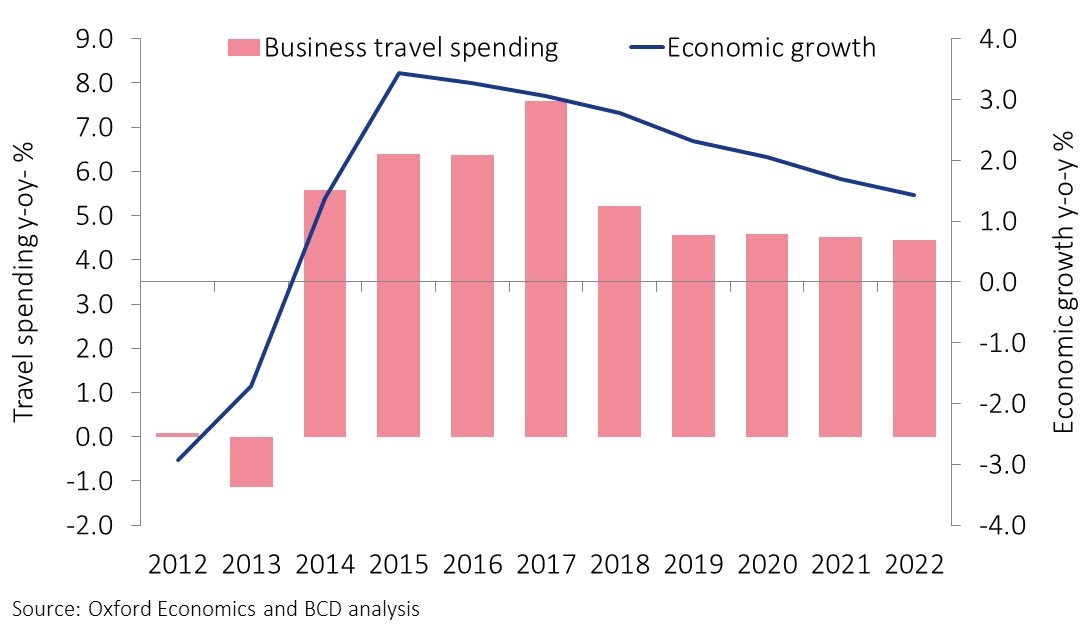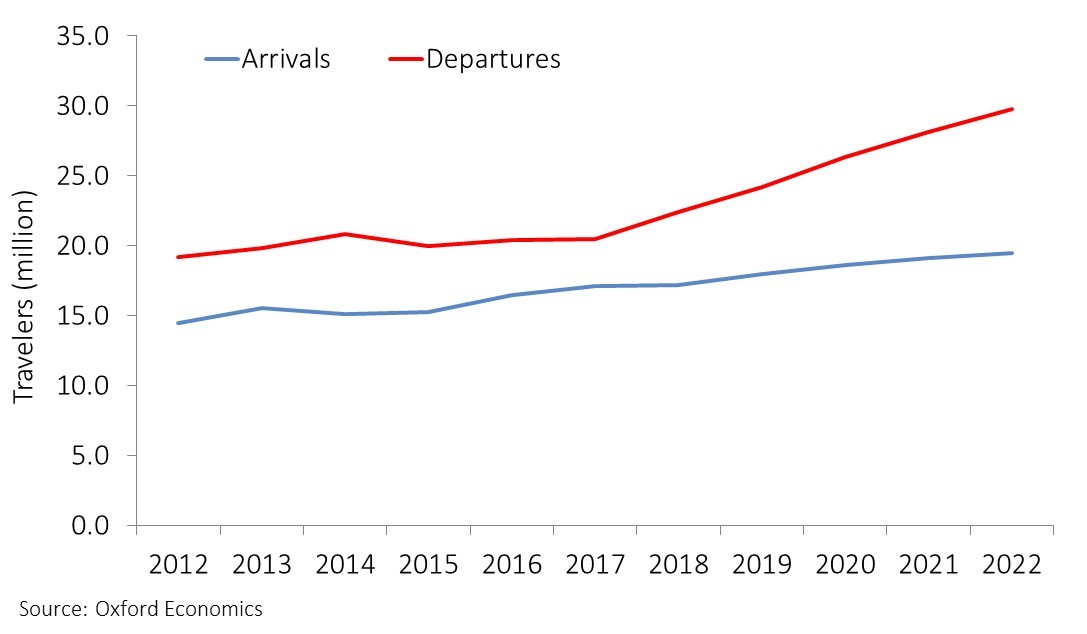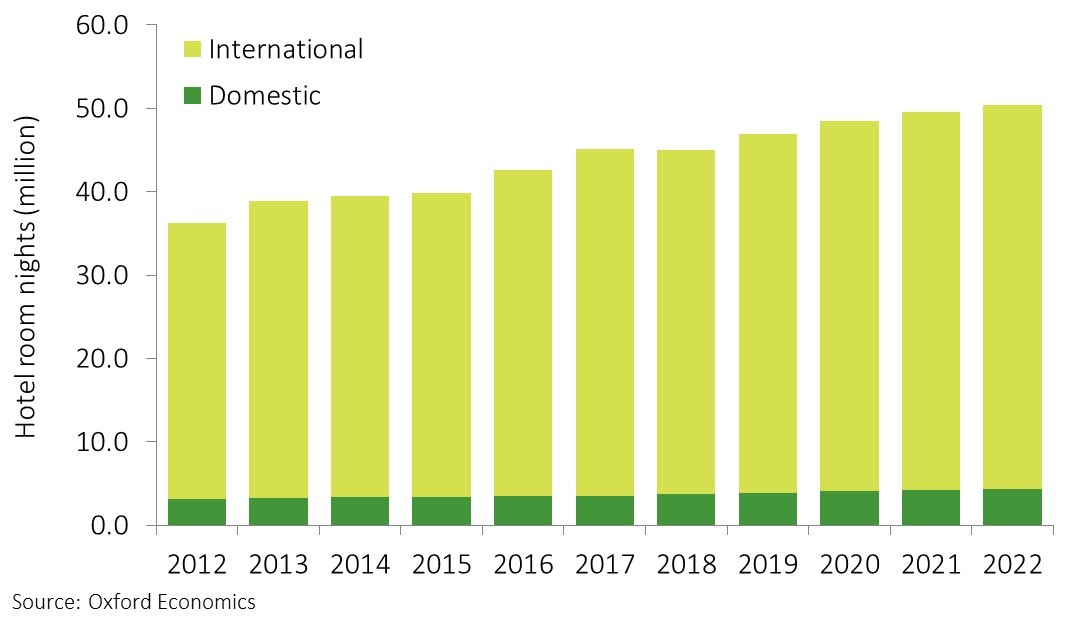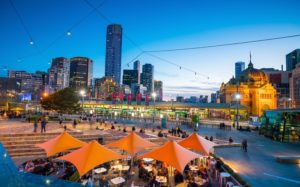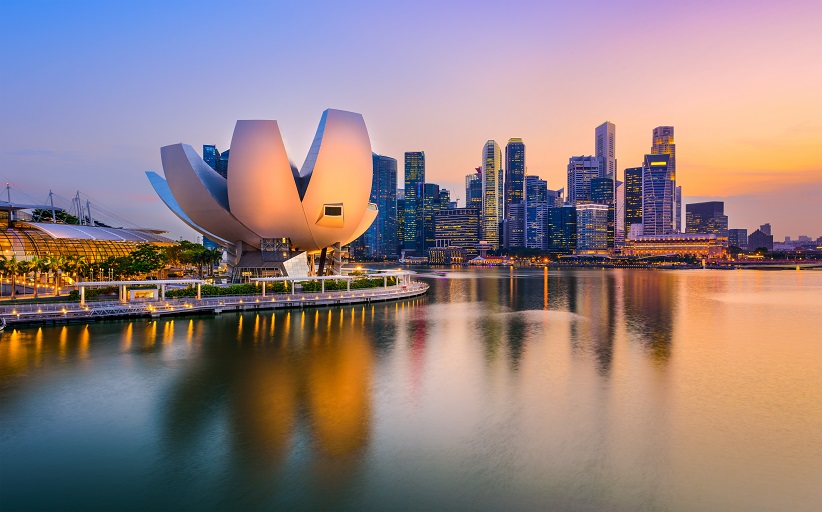
Business travel is expected to grow about 3% annually through 2020
Businesses spent more than US$28 billion (38 billion Singapore dollars) on travel to, from and within Singapore in 2017. Inbound trips consistently account for two-thirds of total spending on business travel; outbound travel makes up 29%. The domestic segment is less than 5% of total spending, and outlays in the local currency remained essentially flat between 2012 and 2017. Industry economists foresee business travel growth of almost 3% annually through 2020, as international travel strengthens. Domestic travel is expected to expand more than 7% per year.
Download the 2019 Industry Forecast, with region-specific reports and infographics available in six languages. Ask how BCD Travel can help you get travelers to emerging and established markets all over the world.
Economic environment
Economic growth and business travel spending
Click on image to enlarge
- Singapore’s economy is influenced mostly by external forces. Its goods and services exports make up most of its gross domestic product (GDP).
- The economy expanded 4.2% in the first half of 2018, but it’s slowing as the manufacturing sector loses momentum. Economists predict annual of 3% this year.
- The forecast for 2019 is growth of just 2.4% because of softer demand from China and the effects of global trade protectionism.
- Domestic demand is unlikely to help; higher oil prices and rising interest rates are offsetting improvements in Singaporeans’ household spending power.
Air
International travel
Click on image to enlarge
- International travel expanded, on average, 2.2% per year between 2012 and 2017.
- Departures accounted for 55% of the 38 million international trips made in 2017. Outbound travel is expected to grow almost 8% annually through 2022, while a arrivals will hold steady—growing at around 3% per year.
- China has replaced Indonesia as the top source of visitors to Singapore, now accounting for 22% arrivals.
- Malaysia is the most popular destination for Singaporean travelers, accounting for 61% of their outbound travel in 2017. This share likely to stay steady through 2022.
- Singapore’s air travel market is competitive, with more than 70 airlines flying to the country. But its main Changi Airport is dominated by SIA Group, comprising full-service Singapore Airlines, regional carrier SilkAir and low-cost carrier Scoot. Together, these three airlines account for 47% of all departing flights.
- SIA Group increased its market share by one percentage point—to 54.4%—during the first eight months of 2018.
Accommodation
Hotel demand
Click on image to enlarge
- Hotel demand increased 25% between 2012 and 2017, averaging a 4.5% annual increase. That’s expected to weaken to 2.2% growth per year through 2022.
- International travelers drive demand, consistently accounting for more than 90% of room nights.
- Indonesian budget brand Zen Rooms, with 34 hotels, has the most properties in the Singapore market.
- The next two largest chains—Global Premium Hotels Ltd and Hotel 81—are based in Singapore and operate in the same economy segment as Zen Rooms.
- AccorHotels is the largest global chain; its 15 hotels span all service levels except economy.
- Local chains Far East Hospitality, Pan Pacific Hotels and Aqueen Hotels & Resorts may appeal to some business travelers. Most properties offer upscale or upper upscale service.
- Average daily rates should rise 0% to 2% in 2018 and 2019, according to BCD Travel’s 2019 Industry Forecast.
